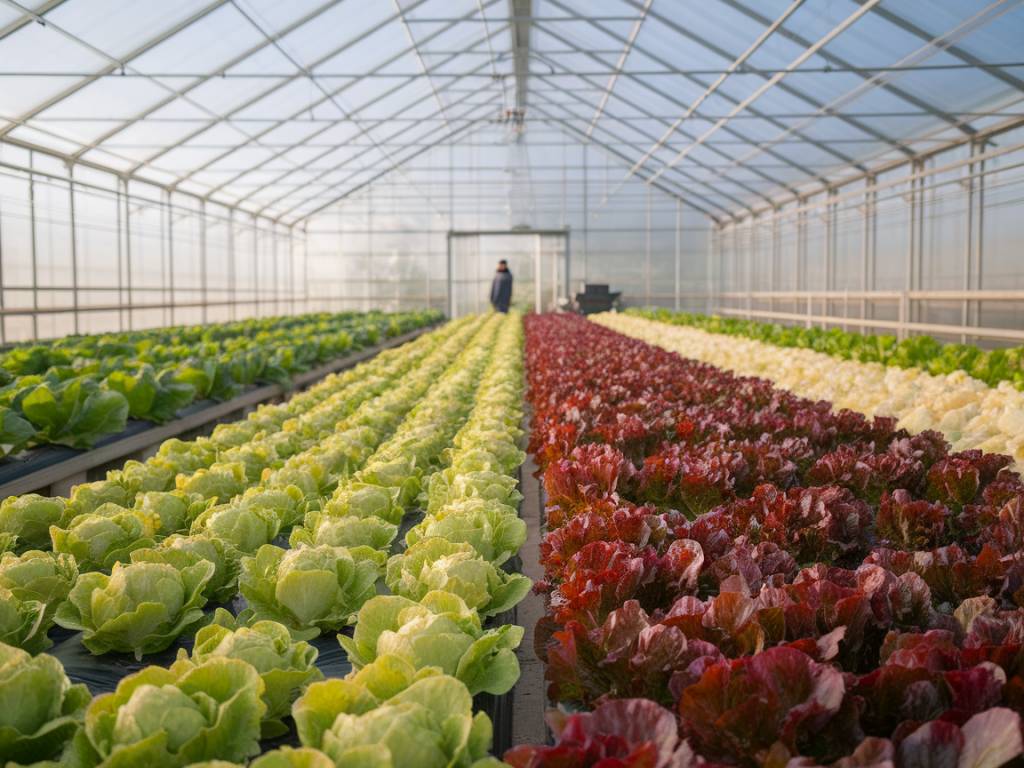As the winter chill sets in, many gardeners retire their tools and wait for spring. However, with a greenhouse and some planning, you can harvest crisp, fresh lettuce throughout the winter months. Growing winter lettuce in a greenhouse is not just a delightful way to enjoy fresh greens during the cold season; it also helps to extend the gardening year and contributes to sustainable, healthy living.
Choosing the Right Lettuce Varieties
One of the first steps to successful winter lettuce cultivation is selecting the right lettuce varieties. Not all lettuces thrive in colder conditions, so focus on hardy types.
Recommended varieties include:
- Winter Density: This is a romaine-type lettuce that is robust and can tolerate low temperatures well.
- Arctic King: Perfect for winter growing, this butterhead lettuce remains crisp even in cooler environments.
- Valdor: Known for its resistance to cold, this lettuce offers a dense, tender head.
- Merveille des Quatre Saisons: A beautiful heirloom lettuce that performs well in various climates, including the cold.
Preparing the Greenhouse
Your greenhouse setup plays a vital role in the success of your winter lettuce. Here’s what you need to consider:
Insulation
Ensure your greenhouse is well-insulated. Bubble wrap or horticultural fleece can significantly reduce heat loss. Covering the greenhouse in an extra layer of polythene also helps.
Heating
While lettuces can tolerate cooler temperatures, having a backup heat source like a small electric heater or heat mats can be beneficial, especially during freezing nights. Consider investing in a thermostatic control to maintain the ideal temperature.
Ventilation
Even in winter, good ventilation is crucial. Condensation can build up and lead to fungal diseases. Open vents on milder days to allow airflow but avoid drafts directly hitting the plants.
Lighting
Although lettuce doesn’t require intense sunlight, having supplemental lighting during short winter days can help. LED grow lights are energy-efficient and offer the right spectrum for leafy greens.
Soil and Planting
Lettuce prefers a well-draining, fertile soil. Before planting, prepare your soil by incorporating organic compost to enrich it. Alternatively, you can use grow bags or containers filled with quality potting mix.
Sowing Seeds
Directly sow your seeds into the soil or trays. Plant the seeds about 1/4 inch deep and space them about 6 inches apart to allow for growth. If you’re using trays, you can transplant the seedlings once they have a few true leaves.
Watering
Consistent, moderate watering is key. Over-watering can lead to root rot, while under-watering can stress the plants. Water early in the day to allow the soil to dry out by evening, reducing the risk of fungal infections.
Maintaining Healthy Growth
To ensure your winter lettuce grows healthy and strong, consider the following tips:
Temperature Monitoring
Lettuce likes cool temperatures but not freezing. Aim to keep the greenhouse between 45°F (7°C) and 65°F (18°C) during the day. Night temperatures can drop slightly, but avoid prolonged exposure to temperatures below 32°F (0°C).
Feeding
Lettuce doesn’t require heavy feeding. A light application of a balanced, organic fertilizer once a month should suffice. Over-fertilizing can lead to lush but weak growth.
Pest Management
Although winter reduces the number of active pests, aphids and slugs can still pose a threat. Regularly inspect your plants and use organic deterrents if necessary. Introducing beneficial insects like ladybugs can help control aphids.
Weeding
Keep the growing area tidy by removing any weeds. Weeds compete for nutrients and can harbor pests. Mulching with straw or leaf mold can help suppress weeds and retain soil moisture.
Harvesting Your Winter Lettuce
The joy of winter gardening comes to fruition when it’s time to harvest. Here’s how to get the best from your crop:
Timing
Most winter lettuce varieties mature in 8-12 weeks. Harvesting in the morning ensures the leaves are crisp and full of moisture.
Cutting
Use a sharp knife or scissors to cut the leaves. For cut-and-come-again varieties, trim the outer leaves so the inner ones continue to grow. For head lettuces, you can harvest the entire plant when it reaches the desired size.
Post-Harvest Care
After harvesting, rinse the lettuce thoroughly in cold water and let it dry before storing it in the refrigerator. Freshly harvested lettuce can last up to a week if kept cool and dry.
Enjoying the Fruits (or Leaves) of Your Labor
After all the hard work, nothing beats the reward of fresh, homegrown lettuce in the middle of winter. Whether you enjoy it in salads, sandwiches, or as a garnish, the crisp, sweet taste of winter lettuce is unparalleled. Plus, knowing that you grew it yourself using natural methods adds an extra layer of satisfaction.
As you continue your winter gardening journey, experiment with different varieties and techniques to find what works best for you. The beauty of gardening lies in its endless possibilities and the seasonal rhythms that keep us connected to nature.
Happy gardening!
Samanta
